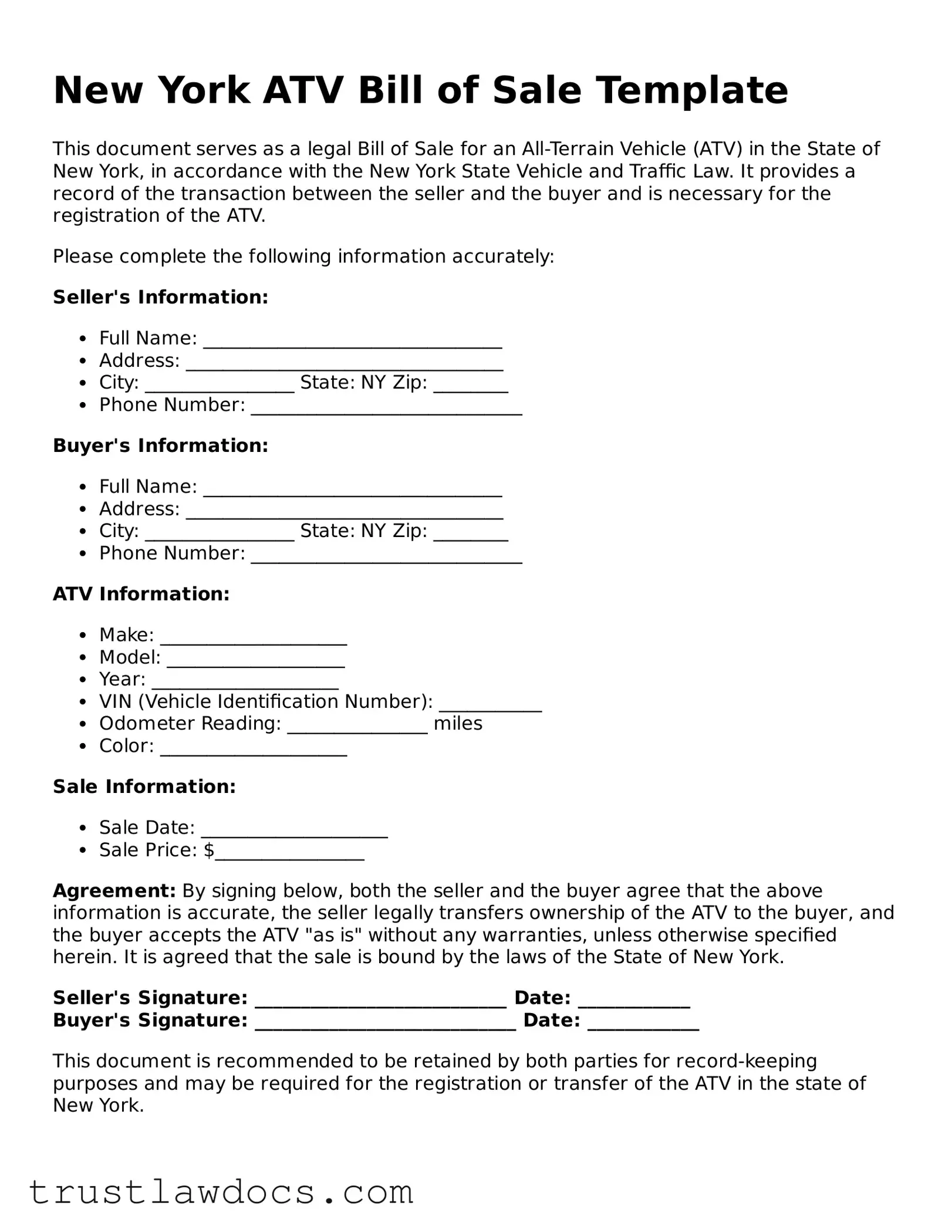What is a New York ATV Bill of Sale form?
A New York ATV Bill of Sale form is a document that records the transaction details between a buyer and a seller for the sale of an All-Terrain Vehicle (ATV) in the state of New York. It includes critical information such as the ATV's make, model, year, VIN (Vehicle Identification Number), the sale price, and the names and signatures of the buyer and seller. This document serves as proof of purchase and can be used for registration and titling of the ATV.
Do I need a Bill of Sale to register an ATV in New York?
Yes, when registering an ATV in New York, a Bill of Sale is typically required as part of the documentation package. It provides the Department of Motor Vehicles (DMV) with necessary information to verify the sale and transfer of ownership. It's recommended to check the latest requirements with the New York State DMV since regulations can change.
What information should be included in a New York ATV Bill of Sale?
An effective New York ATV Bill of Sale should include the date of sale, buyer's and seller's names and addresses, a detailed description of the ATV (including make, model, year, and VIN), the sale price, and clear signatures of both the buyer and seller. Including an acknowledgment that the ATV is sold "as is" can also protect the seller from future claims regarding the ATV's condition.
Is notarization required for an ATV Bill of Sale in New York?
No, notarization is not a mandatory requirement for an ATV Bill of Sale in New York. However, having the document notarized can add an extra layer of validity and help resolve any potential disputes by verifying the identities of the parties involved.
Can I create my own ATV Bill of Sale, or do I need a specific form from the DMV?
While the New York State DMV provides specific forms for many transactions, you can create your own ATV Bill of Sale as long as it contains all the necessary information. Ensure it is comprehensive and clear to all parties involved. Using a template might help to make sure you include all the required details.
What should I do if I lose my ATV Bill of Sale?
If you lose your ATV Bill of Sale, it's important to contact the seller and request a duplicate. If the Bill of Sale was notarized, you might also be able to obtain a copy from the notary who witnessed the document. Keeping a digital copy of the Bill of Sale can prevent such issues.
How does the ATV Bill of Sale protect the buyer?
The ATV Bill of Sale protects the buyer by serving as proof of ownership transfer from the seller. It can be used to show the purchase price, which might be necessary for ensuring fair taxation by the DMV. In disputes regarding ownership or if the ATV was stolen before the sale, this document can be crucial evidence.
How does the ATV Bill of Sale protect the seller?
For the seller, the ATV Bill of Sale acts as proof that the responsibility for the ATV has been transferred to the buyer. This can protect the seller from liability for any accidents or violations involving the ATV that occur after the sale. Including an "as is" statement in the Bill of Sale also helps to prevent future claims by the buyer related to the condition of the ATV.
